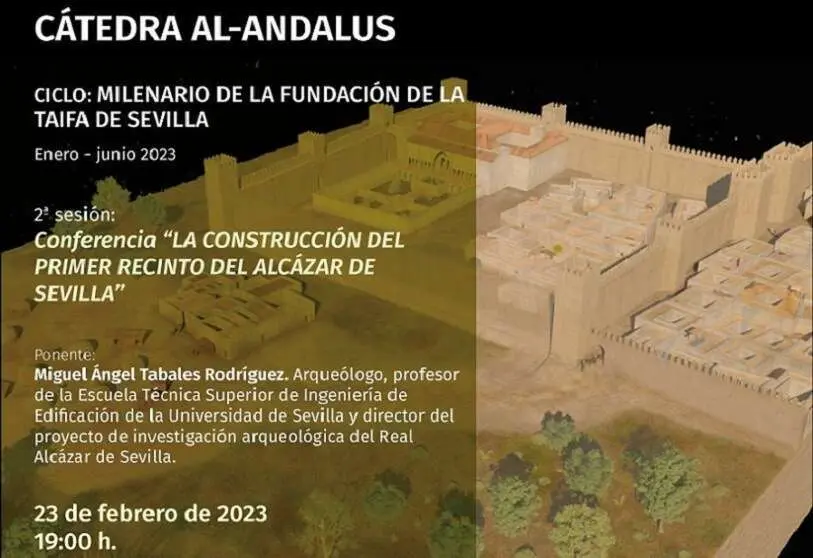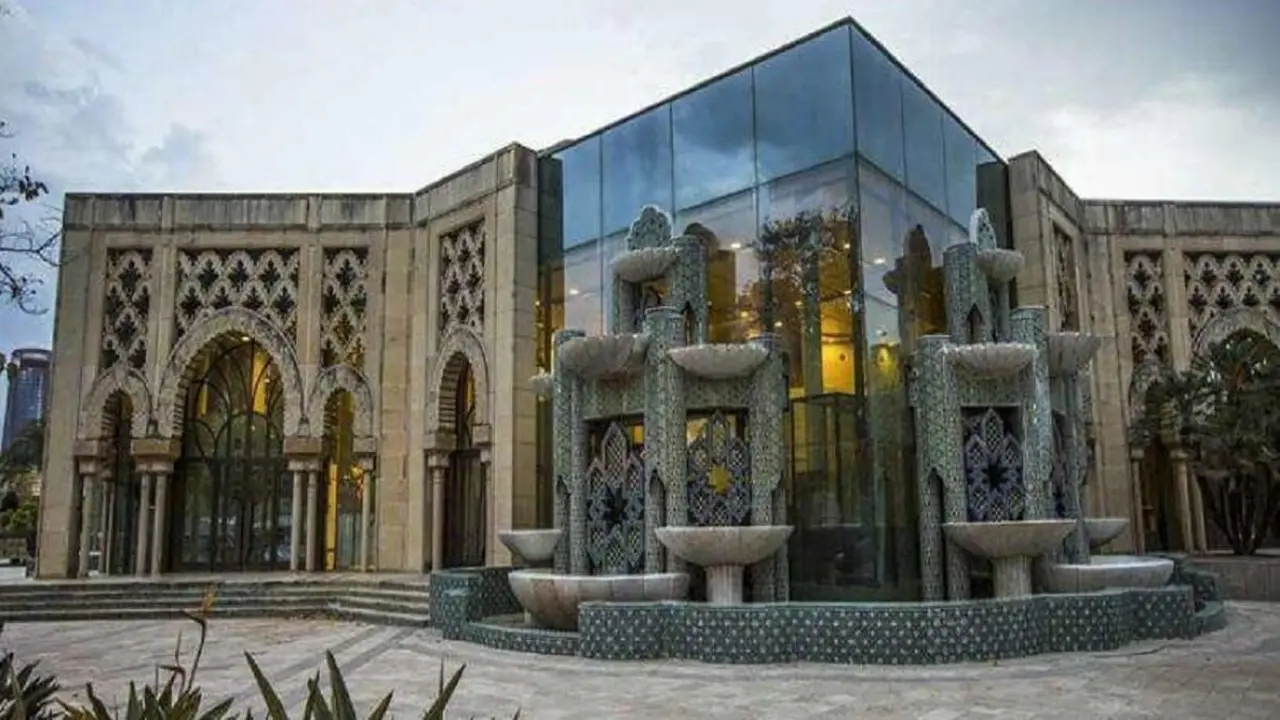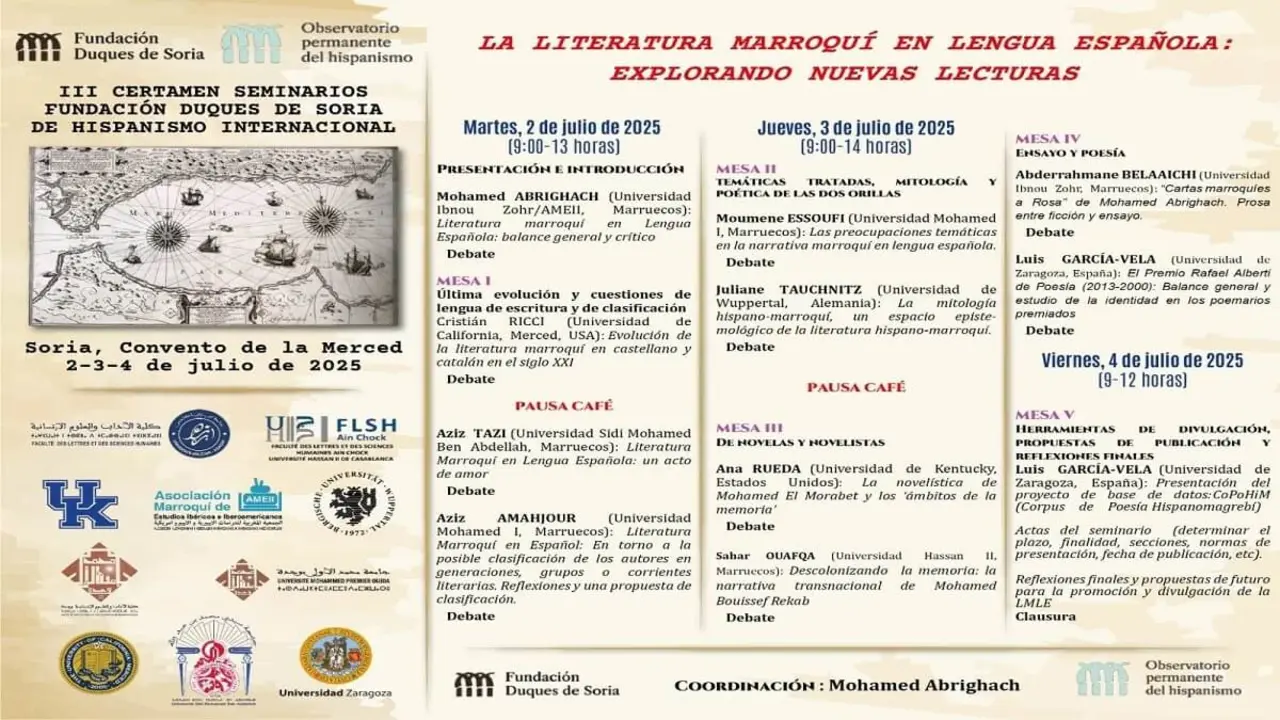The Three Cultures Foundation dedicates the al-Ándalus Chair to the thousandth anniversary of the founding of the Taifa of Seville

Coinciding with the thousandth anniversary of the establishment of the Taifa of Seville, the Three Cultures Foundation will devote the lectures of the first half of the new year of the Chair al-Ándalus to disseminate and bring this historical period to a wide audience, analysing the vicissitudes and legacy of a dynasty as legendary as it is unknown.
The origins of the Taifa of Seville and the circumstances that led to its foundation, the performance of its rulers and their influence both in the city itself and in the rest of the territories of al-Andalus, as well as its subsequent historical development, will be some of the issues addressed by experts in the field.
The second session of this series will be held on Thursday 23 February at 19:00 under the title "The construction of the first enclosure of the Alcázar of Seville" in the Palace of the Marquises of La Algaba. The conference will be given by Miguel Ángel Tabales Rodríguez, archaeologist, professor at the School of Building Engineering of the University of Seville and director of the archaeological research project of the Real Alcázar of Seville.
The process of progressive disintegration that culminated in the collapse of the Caliphate of Córdoba in 1031 was accompanied by the parallel emergence of taifas or independent kingdoms throughout the territory of al-Andalus. Of these, in terms of extension, influence and power, the taifa of Seville, under the rule of the Abbasids, stood out, which was able to partly take up the baton of the extinct Umayyad splendour.
Founded in 1023 by the cadi Abu-l-Qasim Muhammad Ibn Abbad - from which the name of the dynasty derives - the Taifa of Seville extended over a vast territory, which at its peak encompassed such scattered localities as the Portuguese Algarve, a large part of the Alentejo, Niebla, Huelva, Algeciras, Morón, Carmona and Arcos, as well as part of the lands of the Kingdom of Toledo and Jaén, at various times including the old Caliphate capital, as well as Murcia, which made it the most extensive taifa in al-Andalus.
In the architectural field, the Abbasids undertook a programme aimed at beautifying the city of Seville, constructing luxurious buildings and palaces such as the so-called 'Alcazar al-Mubarak' (the Blessed), which probably formed the nucleus on which the present-day Alcazar developed. At the same time, they established a court of intellectuals that attracted scholars from all over the world and is considered one of the most prestigious of the entire Andalusian period. Seville thus became the intellectual capital of al-Andalus and the main cultural centre of Europe at the time.
The splendour of the court of Seville under the rule of the Banu Abbad contrasted with the political turbulence that marked his reign, which was marked by constant conflict with the neighbouring taifas and, increasingly, with the rising Christian kingdoms. It was precisely the fall of Toledo into the hands of the king of León, Galicia and Castile, Alfonso VI, in 1085, which prompted the call for help from several taifas to the Almoravids, culminating in the occupation of Seville by the latter in 1091 and the end of the Abadid dynasty, with the exile of its last king to Morocco.
Despite the brevity of their rule - from 1023 to 1091 - the Abbasids provided some of the most recognisable figures in the history of al-Andalus, including al-Mutadid and, even more so, his son al-Mutamid - considered one of the most brilliant Andalusian poets - and his wife, al-Rumaykiya, who have passed into the realm of popular legend up to the present day.








